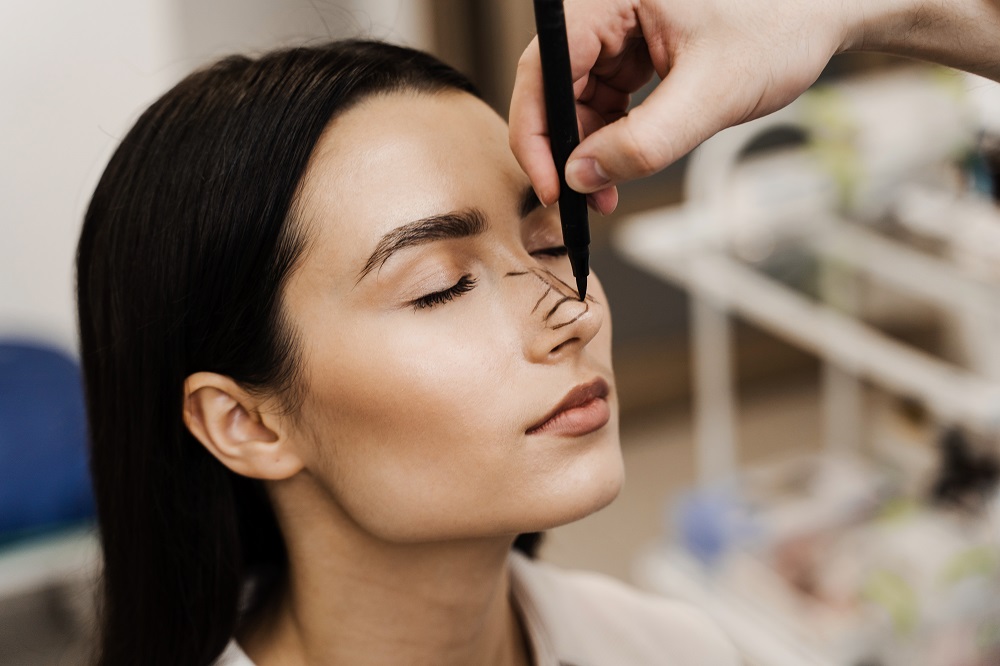Rhinoplasty, commonly referred to as a nose job, is a surgical procedure that can alter the shape of your nose for either aesthetic or functional reasons. It’s a significant decision that requires careful consideration and an understanding of what the surgery entails. Factors like the experience of the surgeon, your personal health, and the realistic outcomes of the procedure are crucial to weigh prior to committing to this transformation. The goal is to achieve facial harmony and possibly improve breathing, but it’s important to have clear and realistic expectations.
The benefits of rhinoplasty may be substantial, ranging from enhanced appearance to improved respiratory function. However, as with any surgery, there are risks and potential complications. It’s vital to consider these factors, along with the recovery time and the potential impact on your daily life post-surgery. Consulting with a skilled surgeon, such as those acclaimed for performing rhinoplasty in Chicago, can offer insights into the specific nuances of the procedure.
Key Takeaways
- Rhinoplasty can enhance facial harmony and breathing.
- Consider the surgeon’s experience and your health.
- Understand the risks and recovery process.
Understanding the Procedure
Rhinoplasty, commonly known as a nose job, is a complex surgical procedure that requires meticulous planning and execution. The success of your rhinoplasty in Chicago or elsewhere hinges on thorough preparation and a clear understanding of the surgery details.
Consultation and Preparation
Your journey begins with a consultation with a board-certified plastic surgeon. During this meeting, discuss your expectations and the desired shape of your nose. The surgeon will review your medical history, assess your current medications, and may perform a physical exam to understand your nose’s unique structure. Preparing for rhinoplasty involves abstaining from smoking, alcohol, and certain medications and supplements that can affect healing. Following your surgeon’s advice on diet, exercise, and incorporating vitamin C and iron is crucial for your recovery.
Rhinoplasty Surgery Details
The actual rhinoplasty procedure unfolds under anesthesia to ensure you’re comfortable and pain-free. Incisions are typically made inside the nose or across the columella to access the bones and cartilage that form your nose’s structure. The surgeon meticulously reshapes these elements to achieve the agreed profile, symmetry, or correction of asymmetry. After the reformation, a bandage, splint, or sutures may be applied to support the new shape during healing. Post-surgery, you should expect some swelling, bruising, and pain, which medications can manage. Strictly adhere to your surgeon’s guidance on nose care and scar care to support the healing process and maintain the results. Managing post-operative care is critical to minimize the risk of bleeding, infection, scarring, and the need for revision surgery. It’s also advised not to drive, apply pressure, or wear glasses that could impact the nose immediately following the procedure. Understanding these details helps set realistic expectations for the outcomes of your surgery and the lifetime of results.
For more information on the procedure, consider exploring options with experienced surgeons like those at Rhinoplasty in Chicago, renowned for their precision and expertise.
Risks and potential complications
Before undergoing a rhinoplasty procedure, it’s crucial to understand the risks and potential complications that may arise. These include issues related to the surgery itself, the recovery period, and the final results as compared to your initial expectations.
Post-surgery Care and Maintenance
After your rhinoplasty, it’s important to follow your surgeon’s post-surgery instructions meticulously to mitigate risks like infection and bleeding. Dr. Dayan has emphasized the importance of post-operative care to ensure facial harmony. You will likely have to apply gauze, manage potential pain with prescribed medications, and avoid certain activities that could put pressure on your nose. Avoid wearing glasses or engaging in rigorous exercise until your surgeon gives you approval.
Recovery and Healing Process
The recovery period involves several stages, including managing immediate swelling and bruising to gradual healing of the incision sites. You’ll be given a bandage or splint to protect your nose post-surgery. It’s essential to keep your head elevated and avoid any strenuous activities that could impact the bones or cartilage. During this time, understanding the normal timeline of the healing process can help you set realistic expectations and detect any abnormal signs that might require a physician’s attention.
Expectations vs. Reality
Achieving the desired shape and symmetry of the nose is a key goal of rhinoplasty surgery, but it’s vital to have realistic expectations. Each individual’s healing process is unique, and the surgery’s outcome may not be fully visible until complete recovery. Sometimes, a revision, or secondary rhinoplasty, may be necessary. Maintaining results and the long-term stability of your new nose shape requires careful nose care and possibly scar care. Be aware of the cost and the fact that not all procedures are covered by insurance, potentially leading to significant expenses. Consider the investment and payment options carefully, and choose a board-certified surgeon with the experience and technique to meet your expectations.
Conclusion
Choosing to undergo a rhinoplasty is a significant decision that requires careful consideration of various factors, including selecting a qualified surgeon and understanding the costs involved. Ensure you have realistic expectations and are prepared for the recovery process. By considering these elements, you’ll be better positioned for a satisfactory outcome.

